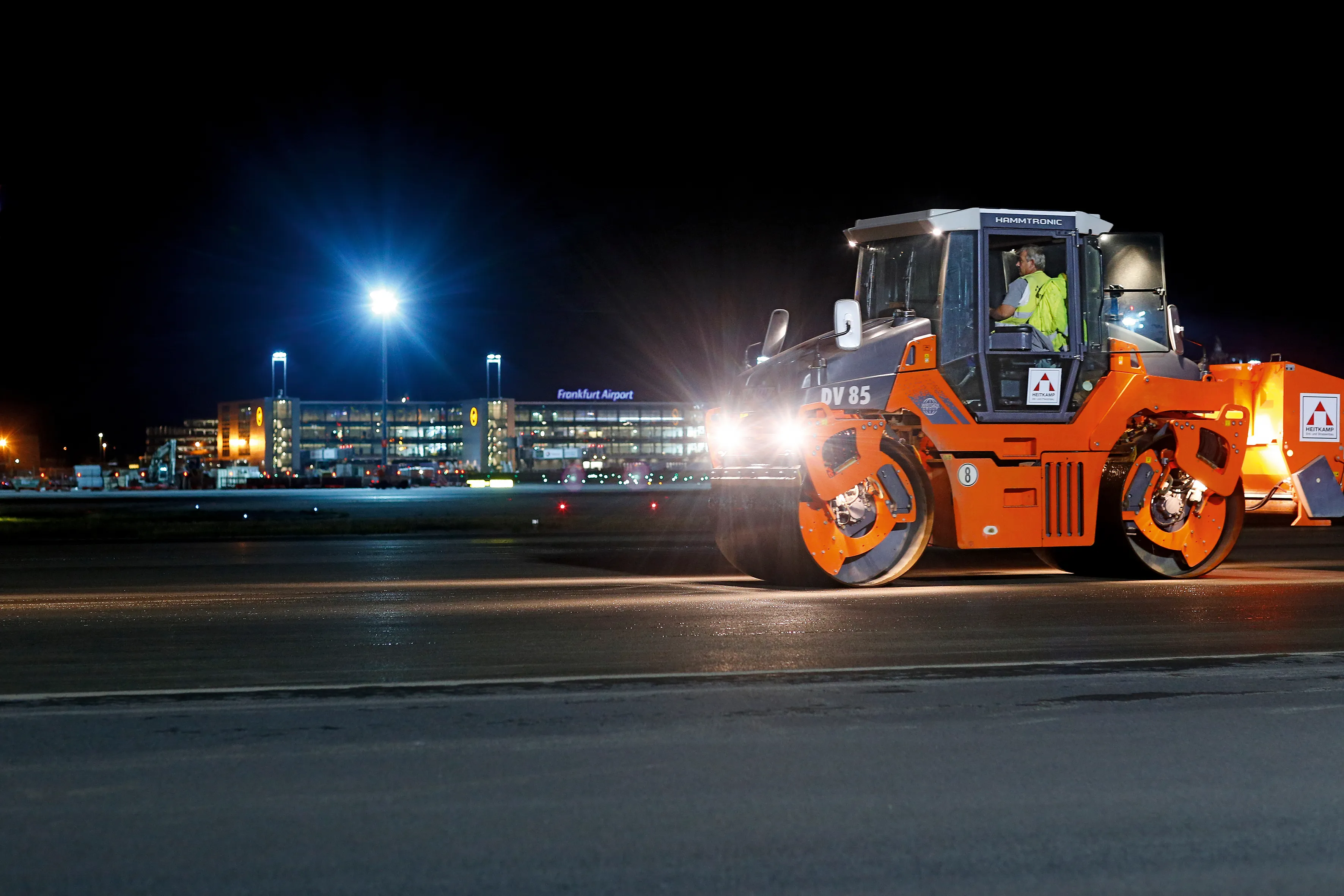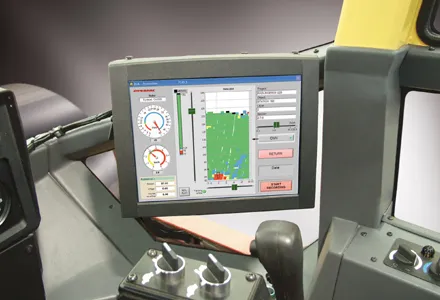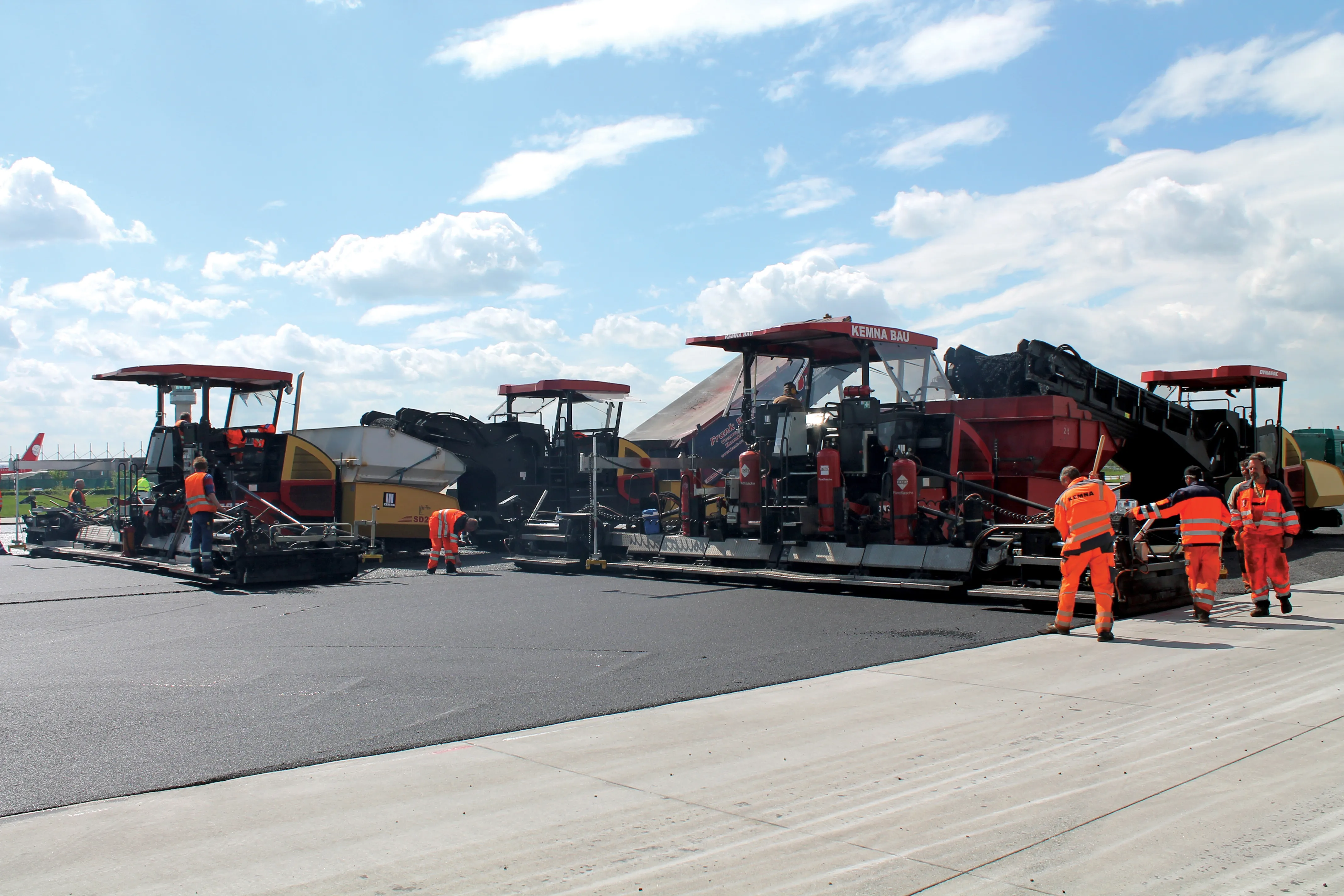
Time was at a premium for Wirtgen machinery when resurfacing the runway at Frankfurt/Main Airport
Europe’s third largest airport, Frankfurt/Main, has new surface course on runways about every seven year, including the centre runway, the most-frequently used section.
Milling and paving the surface course would normally be standard activities, if it were not for the extreme time pressure and high quality requirements, especially on the central runway at 4km long and 60m wide.
Fraport, operator of Frankfurt, had given the general contractor, Heitkamp Erd- und Straßenbau, only 60 hours to complete paving.
A total of 20,000 tonnes of material were processed in total, thanks to four
The W 250i, W 210i and W 2200 large milling machines are designed for continuous high-performance output. “The most critical points on major projects of this kind are usually the removal of the milled material and the water supply,” explains Klaus Kormann, site manager for GMS.
An intermediate storage facility was set up on airport grounds for the milled material to minimise turnaround times. When it came to water support, the advantages of the WIDRIVE machine management system from Wirtgen were evident. It monitors and controls the speed of the milling drum and conveyor as a function of feed rate and milling depth.
It also manages the water system by automatically shutting off the water when the milling drum is lowered into working position or when milling stops. In addition, the water pump pressure is automatically increased or decreased depending on engine load and milling speed. These functions significantly reduce water consumption, making the milling process much more efficient.
Dual Engine Concept
The high milling performance of the W 210i and W 250i is due to their two separate diesel engines. At the same time, these large milling machines use energy very efficiently thanks to WIDRIVE, all while being easy on the environment. Also, the engines are mounted in “silent blocks” that dampen noise and protect the machine operator against excessive vibration.
Once the milling machines had cleaned the surface, an adhesive layer was applied as a base for the new asphalt layer. Asphalt paving was then carried out in two night-shifts between 5pm and 7am, meaning little traffic congestion for the 35 trucks.
Each night, the Heitkamp crew paved 40,000m² of an AC 11 D S aggregate-rich asphalt that offers high resistance to grain break-out. “Material with a high aggregate content is critical for aircraft because dislodged stone particles could otherwise damage the sensitive engines,” says Axel Konrad, project manager for Fraport. “Another reason is that abraded rubber from the aircraft wheels can easily be removed from this material.”
Pave trains
Four trains comprising
To this end, Jörg Pigorsch, Heitkamp's senior site manager, deployed four Vögele MT 3000-2i high-performance feeders at the site. They can take on an entire 25 tonne load of mix from a truck in just 60 seconds.
During transfer to the paving process, the mix is homogenised by special transverse conical augers inside the material hopper of the Vögele PowerFeeders. Colder areas along the edges are mixed with warmer mass and segregated edge areas from unloading the truck are mechanically homogenised. Infrared heating keeps the conveyor at the right temperature to prevent mix from sticking.
Following behind the feeders were four Vögele pavers: two SUPER 1800-3is, one SUPER 1900-3i (lead paver) and one SUPER 2100-2i. They paved the surface course hot-to-hot at a width of 31m. During the night shifts, the ErgoPlus 3 operating system’s console came into play, with its extra-large colour display and high-resolution images visible even in poor lighting conditions.
Another highlight of the SUPER 1900-3i and SUPER 1800-3i is the material handling. In these pavers, the proportional control of the conveyor and augers with continuous monitoring of the mix level ensures an optimum head of mix in front of the screed.
Furthermore, the auger height can be hydraulically adjusted by up to 15cm across its entire working width, including the bearing boxes and limiting plates. An optimum spread of mix is achieved as a result, even when paving thin overlay or varying thicknesses within a single section. With their very large blades, 400mm in diameter, the augers ensure optimum spread of the mix without segregation, even across large paving widths. This was a relevant factor at Frankfurt where paving widths of 7.5-8m were required.
Hamm for final compaction
Four
On night-duty at Frankfurt Airport, it became apparent how important the roller’s good lighting is. To enhance safety and quality when working at night, Heitkamp equipped the machines with LED working lights and lights for the drums and drum edges.
Another quality factor is the smooth reverse function. The Hamm rollers help the operator because the DV 85 brakes and accelerates the drum automatically. With optimised ramps, the rollers effectively prevent lateral displacements in the asphalt and produce an exceptionally smooth surface. The high-precision pivot-steering supports this process. The steering resistance changes as a function of speed to avoid jerky steering movements. Rollers have a very large and variable track offset. Together with the 1.68m-wide drums, it supports a maximum working width of no less than 2.99m.
The Hammtronic electronic machine management system for monitoring engine and travel functions aided the machine’s efficiency. It automatically adapts the drive, vibration, oscillation and engine speed to operating conditions. Perfectly tuned machine control ensures optimum compaction quality, reduces fuel consumption as well as exhaust and noise emissions.
After the asphalt pavement was placed, Fraport worked at full tilt for another 12 hours to complete the centre runway, says Pigorsch. They also took advantage of resurfacing to equip it with energy-saving, long-lasting LED technology.
And at exactly 5.m, the runway was re-opened to air traffic. Job done.









